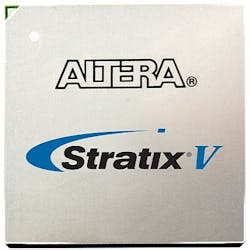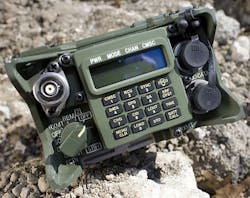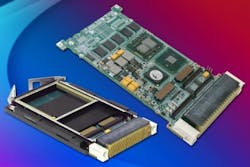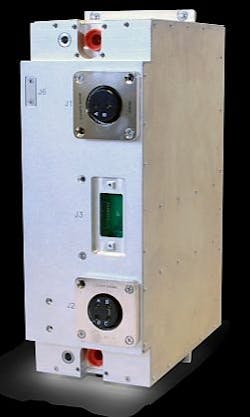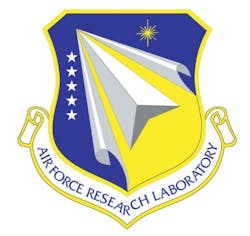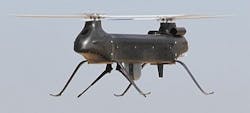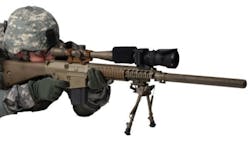Power and thermal management considerations move to the forefront of aerospace and defense electronic systems
This trend, of packing current and future military and aerospace platforms with power-hungry, heat-generating electronics components and systems, is certain to continue into the foreseeable future. It also continues to drive the need for efficient and effective power and thermal management systems.
Design and integration issues
Military and aerospace systems designers face a litany of challenges with regard to power and thermal issues today, Vicor's Johnstad adds. "A challenge, especially with military systems, is the need to meet specific military standards. In military systems, several standards govern power quality: one for airplane systems, one for ground systems, and a third is a broad EMI [electromagnetic interference] standard covering essentially all types of ground, naval, and airborne frames. If you're putting a power supply into a military ground vehicle, for example, it typically has to meet certain aspects of a standard which governs power supplies and power quality for ground vehicles, which is MIL-STD-1275."
Engineers are, more often than not, confronted with designing myriad capabilities and functionality into systems that must adhere to strict size, weight, and power consumption (SWaP) requirements, deliver sufficient heat dissipation, as well as meet aerospace and defense standards. In short, more electronics translates to more power consumption and greater heat generation. These power and heat challenges are further exacerbated by the remote locales and temperature extremes in which the systems must operate, reliably and without fail.
With high ambient temperatures, the challenge military and aerospace systems designers face today becomes how to keep the temperature of the electronics down and the reliability up, Butler continues. "Ever-increasing system requirements drive system power levels up, drive size down, and only make the challenges today and in the future more demanding.
"To achieve higher reliability at higher temperatures, you must start with a high-reliability part, then both minimize power dissipation and maximize heat transfer," Butler advises. "The power lost in the power electronics is dissipated as heat. And this heat must be dealt with to keep the temperature of the electronics down. So the first step is to maximize the efficiency of the power electronics. Reducing the amount of power lost attacks the thermal problem at the source. High-efficiency power electronics can cut power dissipation in half, dropping the temperature rise also by half."
Butler recommends selecting power supplies and power converters intended for harsh environments. VPT's DC-DC converters, for example, are designed with operating temperatures up to 100 degrees Celsius or 125 degrees C and high efficiency, such as more than 90 percent efficiency in the company's DVHE and DVPL Series. "The second step is to maximize the heat transfer," he says.
System-level designs
"Today's advanced military electronics systems for applications including communications, multi-computing, and signal processing are challenged by significantly increased power dissipation as compared to earlier generations," says Bob Sullivan, chief technology officer of engineered packaging at Curtiss-Wright Controls Electronic Systems in Littleton, Mass. "Thermal management has become a critical issue in these new systems."
Electronics are not just for sensors or processing either; electrical power is replacing hydraulic power in more electric aircraft, all-electric warships, and hybrid-electric vehicles in which batteries, insulated gate bipolar transistors (IGBTs), and transformers are all in need of cooling, Parker's Kinney explains. "This means that thermal management cannot be an afterthought. It has to be designed in at the start or else companies risk not meeting requirements or, at minimum, not providing a competitive solution in terms of SWaP."
Not only are electronics used in virtually every application, but at the same time, they are doing more with even smaller packages, Kinney agrees. "This evolution is driving up total heat loads and heat density, which means thermal management cannot be a can that is kicked down the road like it once was," he cautions. "Thermal management folks need to be involved at the very start of a design. You typically can't just blow air across a surface or slap something on the top of a hot device and expect it to achieve peak performance. We are continually pushing for a system-level approach because ultimately that will lead to the best performance, SWaP, and reliability."
Collect and reject heat
In the most efficient systems, designers analyze collecting and rejecting heat together because these two factors are so tightly coupled, Kinney says. "How you collect heat is directly tied to how you can reject the heat. If a customer already has one side of the equation defined, then that may tie one hand behind the back of the designer who has to work on the other side of the equation.
A case in point, Kinney says, is a single-phase polyalphaolefin (PAO) liquid-cooling system. "If PAO is already on a platform as the cooling fluid, then there is only so much you can do to make the heat-collection piece small and efficient."
Parker Aerospace engineers are delivering thermal solutions for hot-running applications like radar, electronic warfare, and lasers. For a recent radar application, a Parker Aerospace thermal management system cooled 9 kilowatts with one cold plate measuring approximately 8.5 by 11 by 0.2 inches. "The bulk of the heat came from an area that was about 8 by 1.5 inches," Kinney says. "It was a two-phase cold plate, so when we are able to get vapor to the heat exchanger, we are also able to shrink the heat-rejection hardware."
Parker Aerospace thermal-management systems include liquid flow-through chassis for conduction-cooled designs, SprayCool chassis for air-cooled printed circuit cards, liquid flow-through modules, and single- and two-phase cold plates, as well as pumps, valves, and hoses.
The use of commercial off-the-shelf (COTS) components and systems are likely contributing to the power and thermal management conundrum.
"Systems designers and integrators are facing significant hurdles in being able to cool the large amounts of heat being generated by modern military and aerospace electronics," notes Ivan Straznicky, technical fellow at Curtiss-Wright Controls Embedded Computing in Ottawa. "These electronics are leveraging the huge advantage provided by COTS devices, such as processors, field-programmable gate arrays (FPGAs), and graphics processing units (GPUs); however, it entails dealing with the associated high-power and high-heat densities of these devices.
"Combined with lower maximum device operating temperatures and the unchanging extended temperatures of rugged environments, the cooling challenge requires innovation at every level of the heat path, from silicon die out to ambient environment," Straznicky continues. Curtiss-Wright engineers have met this challenge by optimizing the heat removal path through the circuit card assembly and chassis out to ambient air, he says.
"Significant analysis efforts are performed upfront for all thermal designs using state-of-the-art, computer-aided engineering tools, such as computational fluid dynamics (CFD) and finite element analysis (FEA)," Straznicky adds. "These efforts produce highly efficient and effective cooling solutions that have been optimized virtually on a computer. Much attention is paid to reducing the contact resistance between conduction card edges and chassis rails, providing customers with higher allowable temperatures at the chassis and system levels and reducing their cooling burden."
COTS conflict
Two distinctive desires exist today in military applications that don't mesh together as well as everyone would like, says Mike Henderson, director of military and aerospace products at TDI Power in Hackettstown, N.J.
"First, there is the desire to reduce SWaP to lessen fuel consumption and improve mobility; however, due to drastic increases in vetronics systems, we are seeing huge increases in power consumption on vehicles," Henderson explains. "Secondly, new Department of Defense (DOD) contracts are pushing COTS solutions even more than in the past, as the military looks to decrease technological risk and budgets. The problem with this is that commercial products typically cannot handle the worsening environment associated, for example, with pushing military vehicles further forward on the battlefield, which is the trend."
Heat is not the only concern; thermal management has to take into consideration extremely cold temperatures, as well, Henderson notes. "Where will our next conflict be? Locations like North Korea, for example, can see subzero temperatures and electrical systems may need a warm-up period in order to operate as intended. This is particularly true of COTS hardware, where the operating-temperature range of electronic components may not be conducive to the environment. Will our warfighter have the time to wait for systems to warm up before engaging the enemy?
TDI's large, vehicular, 20-to-30-kilowatt power supplies are typically liquid-cooled and include a secondary cooling loop often used to cool other devices, such as batteries, generators, and power electronics. "Integrating the cooling loop with all the complementary devices considering pressure drops and flow rates is not easy and requires a high degree of system analysis and modeling," Henderson explains. Further, TDI products are often located in compartments near engines or engine exhaust, where air temperatures can exceed 149 degrees Celsius (300 degrees Fahrenheit) at some times and be underwater at others, such as when fording.
"In these situations, we have had to employ not just one, but several concurrent thermal-management strategies in order to operate effectively," Henderson explains. These strategies include: use of thermal modeling programs; designing to very high efficiency levels, sealed liquid cooling from a secondary loop off the radiator, internal fans to circulate air, preventing hot pockets from forming; the latest components, including silicon carbide (SiC)-based devices; metal heat spreaders to dissipate heat; and applying insulation to prevent heat from surrounding hot air to penetrate into the power electronics."
"An important approach for addressing the increasing electronics load and constraints on thermal management is to produce power electronics that can operate at higher temperatures," says Ernie Parker, director of technology development at Crane Aerospace & Electronics Power Solutions in Lynnwood, Wash. "Applications such as down-hole electronics and electronics mounted within engine compartments have helped drive the development of higher-temperature devices."
High-temperature silicon on insulator (HTSOI) control integrated circuits (ICs) and wide band-gap compound semiconductor (SiC and GaN) field effect transistors (FETs) and rectifiers, along with high-temperature passive components, have enabled power converters to operate to 250 degrees Celsius or higher, Parker notes. The semiconductor devices and packaging processes required are not yet cost effective for most applications, but commercial investment will likely reduce these costs.
"The greatest promise lies in the demand driven by electric or hybrid-electric vehicles for the automobile industry," Parker says. "The power electronics densities and operating temperatures required there are comparable to military and aerospace requirements. While the power electronics used in future automobiles won't directly transfer to military and aerospace applications, the costs required to meet automotive applications should provide sufficient margin to accommodate the increased integrity and unique requirements, while still allowing for a cost-effective solution."
Traditional power management in vehicles for relatively static loads without complex sequencing requirements is fundamentally physical in nature: bus bars, home-run cabling, switches, and circuit breakers, recognizes David Jedynak, technical product manager, Curtiss-Wright Controls Electronic Systems in Los Angeles, Calif. "Modern power distribution and management needs to be smarter to handle the complex set of widely varying loads and sensitivities present on a vehicle with modern electronics."
Curtiss-Wright's Intelligent Power Distribution Demonstrator (iPDD) is a ruggedized power distribution and conditioning device designed for use in military vehicle applications. In fact, the iPDD served as the foundation demonstrator for the development of the Smart Power Architecture for Intelligent Power Distribution. Intelligent power management in the field, where fuel and logistics can be expensive and problematic, are a central focus for organizations such as the U.S. Army when working with vetronics, or vehicle-based electronics.
The iPDD has been designed with modularity and scalability as primary goals to facilitate use in multiple platforms, Jedynak explains. It is capable of delivering up to 2.75 kilowatts to multiple loads from either of two 18-33 volts DC inputs or a 115/220 volts AC 50/60-hertz, single-phase input with uninterrupted transition from one input power source to another. Three types of regulated output voltage are available: eight channels of 28 volts DC, one 12 volts DC output, and one 115 volts AC output. The iPDD interfaces to the core computing element through an Ethernet TCP/IP connection and an open, host-level application programming interface (API) for custom application development.
"The future of power electronics will go hand in hand with the environment that the power electronics are exposed to. For example, it is likely that military vehicles will be pushed beyond forward operating bases (FOBs) into environments that will be increasingly hostile for the electronics that are on the vehicle," Henderson predicts. "Conditions such as blowing, talcum powder-like sand wreak havoc with electronics and conventional cooling methods, such as fans circulating air, become completely ineffective as filters clog, fans seize up, and components overheat and shut down. A robust, liquid-cooled power system sealed from the environment is really the only solution to keep sensitive electronic systems operational in such conditions."
The increasing electronics content of military and aerospace vehicles, whether ground, air, or sea, has required ever-increasing capacity from the thermal-management system, Parker mentions. "As a result many electronics systems are transitioning from air cooling to liquid cooling to increase the overall thermal capacity." Effectively using liquid cooling, however, provides new challenges to power electronics providers, particularly with the limitations on pressure drop and the often high-temp, sometimes corrosive, cooling fluids that are used, he adds.
The unique power and thermal management needs of each specific electronics application in military and aerospace environments are driving solutions providers to expand product and service portfolios and deliver a multitude of options. Technology firms providing solutions for aerospace and defense applications are increasingly offering a wide breadth of power and thermal options to meet the many needs of today's military and aerospace system designers and systems integrators.
"Curtiss-Wright offers a wide range of thermal management solutions that are tailored to the application," Sullivan says. "Liquid cooling is the best approach for high-power systems, but this does not always fit well into the target platform, and there is often customer resistance to using liquid. An alternative for some applications is ANSI/VITA 48.5 Air Flow Through (AFT); though it does have a size and weight penalty, it allows for significantly better cooling than conduction cooling. Forced-air conduction cooling is still the most commonly used approach for highly rugged applications, but it does have thermal limitations due to the thermal losses of the wedge clamp interface as well as the module thermal frames."
The company, therefore, provides a variety of cooling solutions-such as air flow-through modules and chassis, liquid-cooled chassis, conduction- and air-cooled modules, and air/air and liquid/air heat exchangers-and cooling approaches, which include natural convection, forced air, conduction, liquid flow-through, air flow-through, heat pipes, and spray cooling. Company engineers also optimize materials, such as Curtiss-Wright's CoolWall thermal composite construction, to provide thermal improvements in conduction-cooled applications.
Curtiss-Wright Controls Embedded Computing engineers have delivered a thermally and mechanically complex solution for an airborne OpenVPX application. "We developed a compact, forced-air, conduction-style ATR solution supporting a 500-watt hybrid 3U and 6U VPX payload, operating at altitudes up to 50,000 feet," Sullivan mentions. "The 3U section uses an innovative 3U-6U adaptor to allow future technology insertion."
Shrinking packaging
Electronics packaging is shrinking, helping to enable what virtually every aerospace, defense, and commercial customer desires: more power and functionality in a smaller form factor. These compact innovations are nonetheless hot and power-hungry, making it difficult for technology developers to shrink power and thermal solutions in kind.
"Power electronics are not as amenable as digital systems to the miniaturization predictions of Moore's Law and, thus, are become an increasing percentage of the size and cost of the electronic products," Parker says. "The Moore's Law rate of miniaturization for digital electronics/microprocessors, doubling the density every two years, requires reducing the supply voltage by approximately 30 percent in order to achieve a comparable reduction in power consumption. While supply voltages have reduced, they have not done so at a rate equal to the increase in electronics density, resulting in more dissipation per unit volume and the need for better thermal management of the overall system."
"The extremes of military and aerospace environments, coupled with the demand for high reliability and long life, make the thermal management problem even more challenging," Parker adds. "Increased levels of integration are needed to meet the higher density required for military and aerospace applications and to get the power semiconductor devices closer to the thermal interface. The wide operating-temperature range and requirement for high reliability/long life requires careful attention to the materials used between the power die and the thermal interface, including: matching the coefficients of thermal expansion (CTE), use of materials with high thermal conductivity, and a means of attaching materials that provides low thermal impedance and is able to withstand the mechanical stress provided by any CTE mismatch. New heat-sink materials, such as AlSiC, and improved thermally conductive electrically insulating substrates, such as AlN and SiN direct-bond copper (DBC) or direct-bond-aluminum (DBA), help to address these challenges."
Packaging power
The problem of thermal management is of critical importance in the packaging of military and aerospace power supplies, as their power density constantly increases, says Neil S. Symonds, principal engineer at Excelitas Technologies in Waltham, Mass. To illustrate the problem, he says, consider radar and communication systems. "The power that they radiate has remained more or less constant over succeeding generations, but the electronics required to generate this power have shrunk dramatically. This means the power dissipated has to be extracted from an ever-decreasing volume."
Engineers at Excelitas Technologies, a designer and manufacturer of conduction-cooled power supplies for severe environment electronic systems, have devised solutions to the problem of high-power power supplies for such systems, Symonds says. "The first solution has been to devise power converters that yield improved efficiencies, so the amount of heat generated is minimized." In packaging its power supplies, the company's engineers minimize the number of thermal interfaces between any heat dissipating component and the power supply mounting surface, as well as make extensive use of surface-mount semiconductors mounted on high thermal conductivity substrates. "This technique demonstrates thermal resistances that are a huge improvement over conventional packaging techniques, such as semiconductors screwed to a heat sink with an insulating pad," he says.
Excelitas engineers, employing these techniques, have designed and fabricated a multiple-output power supply, rated in excess of 2 kilowatts, for a missile launcher. The power supply, which includes a three-phase power factor correction stage, is packaged in a volume of 250 cubic inches and designed to operate without active cooling in the extreme temperatures. "In future systems, we expect thermal management issues to become more severe as the density of electronics is increased," Symonds forecasts.
Thermal management will continue to be an increasingly difficult challenge to deal with, Kinney recognizes. Technology firms are investing in research and development to advance power and thermal technologies, and to help systems architects and systems integrators better solve design challenges and deliver capable electronics in the hands of awaiting aerospace and defense professionals.
Parker engineers are working with various types of liquids, including PAO, ethylene glycol (EGW) or propylene glycol (PGW), refrigerants like R-134, and performance fluids such as PF-5070. "As electronic applications continue to evolve, cooling things with air is going to be increasingly difficult, that means liquid is going to become even more mainstream," Kinney predicts.
VPT engineers are continually boosting efficiency in the company's existing products to reduce heat, according to Butler. "Higher efficiency engineered into the power converters is the first step in controlling the thermal problem," he says. "The products of the future will need to be highly efficient to manage thermal issues in demanding military, avionics, and other high-reliability electronics systems."
Vicor's Johnstad also forecasts a push for higher efficiency over time. "The more efficient the product, the less heat you have to pull out of it," he explains. "In military environments, that can be extremely challenging. You don't want additional heat being discharged from your power supplies in the hot desert; it's bad for the power supplies and bad for the system as a whole."
Company list
Advanced Thermal Solutions
www.qats.com
Crane Aerospace & Electronics
www.craneae.com
Curtiss-Wright Controls Electronic Systems
www.cwcelectronicsystems.com
Curtiss-Wright Controls Embedded Computing
www.cwcembedded.com
Elma Electronic
www.elma.com
Excelitas
www.excelitas.com
Kontron
www.kontron.com
Martek Power, a Cooper Bussman company
www.martekpower.com
Meggitt Defense Systems Inc.
http://mdswebmaster.com
Mentor Graphics
www.mentor.com
Parker Aerospace
www.parker.com
RINI Technologies Inc.
www.rinitech.com
Rodale Electronics Inc.
www.rodaleelectronics.com
SIE Computing
www.sie-cs.com
SynQor
www.synqor.com
TDI Power
www.tdipower.com
Thermacore Inc.
www.thermacore.com
Vicor Corp.
www.vicr.com
Vishay
www.vishay.com
VPT Inc.
www.vpt-inc.com
